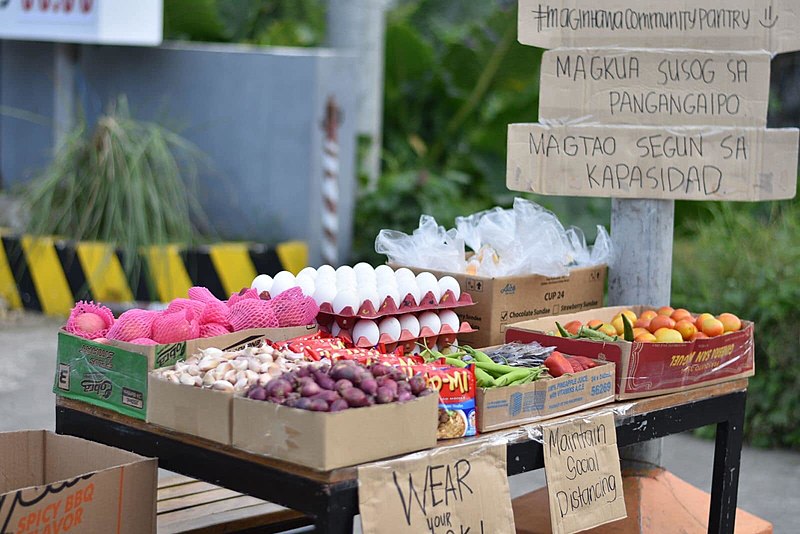Amidst the grim state of the pandemic in the Philippines last April 2021 came a ray of shining light in the form of Ana Patricia Non who started one of the most powerful movements of volunteerism in the country. At that time, Filipinos were struggling to make ends meet and the majority of people were worrying about whether they’d be able to eat properly the next day or simply settle for a glass of water and bread. Non firmly decided to alleviate one of these worries without government aid and set up a “community pantry” stocked up with canned goods, rice, vegetables, and other essentials. It only took a few hours for people to take notice of the deed— and a few days before people started to do the same. Non’s very own community pantry in Maginhawa was then replicated in streets all over the Philippines.
One of the earliest known community pantry extensions was set up in Diliman by Elijah San Fernando, who has been a longtime advocate for local farmers. As such, the goods used for the pantry were purchased directly from them. This not only helped the people who used the pantry, but also the farmers who have been constantly oppressed by businessmen who buy their harvests at unreasonably low prices. Since then, community pantries have sprouted in Marikina, Valenzuela, Antipolo, and other cities. In fact, the Department of Interior and Local Government (DILG) recorded about 6,700 community pantries as of May, that same year.
The community pantries then continued to receive traction both online and offline, where a surge of donations flowed one after another. Vendors, farmers, and the likes began to contribute goods and services in their own ways: baskets of bananas and vegetables like cabbages, tomatoes, etc., canned goods, hygiene products, and more—all of which were taken from their own supplies. Tricycle drivers and construction workers, among others, helped carry sacks of rice and pack goods for the pantry. Monetary donations were utilized to keep the pantries in stock. It was a give and take situation for the people. The community pantries operated on the principle “Give what you can, take what you need,” which was one of the phrases Non read on her quick google search about community pantries before everything started.
Meanwhile, the community pantry movement was also flourishing in the digital world. Filipino netizens, the majority of which are young people, kept everyone updated on the growing list of community pantries and their contact persons, addresses, as well as the various mediums for donations. A couple of young artists also offered free digital art commissions for people who were able to donate and contribute. Filipino singers and celebrities also participated in fundraising events online such as the “Para Sa Masa” (For The People) online concert and more.
Among the many interviews given by Non, her conversation with CNN Philippines remains of utmost significance. “I hope we don’t get tired of helping other people, especially if we have extra [supplies]. We have to expand our capacity to understand people and open up our hearts to them because everyone has different struggles in life.”
What started out in a little bamboo cart in the street of Maginhawa has become a historic moment of mutual aid and volunteerism in the country. While there are little to no community pantries operating at the present time, the movement continues to evolve and advocate for the betterment of people’s lives. Volunteerism shows people’s will for a change, especially in the absence of good governance in times of need.
It has been approximately two years since the community pantry movement began but Non and other volunteers never stopped. It was a showcase of their strong volition for change and their hearts of gold, which are always at the service of the Filipino people. Now, in celebration of Mother’s Day on the 14th of May, Non and the Community Pantry PH organization are spearheading a campaign for a sustainable food program which aims to help local farmers and bring forth accessible and affordable food for everyone.










